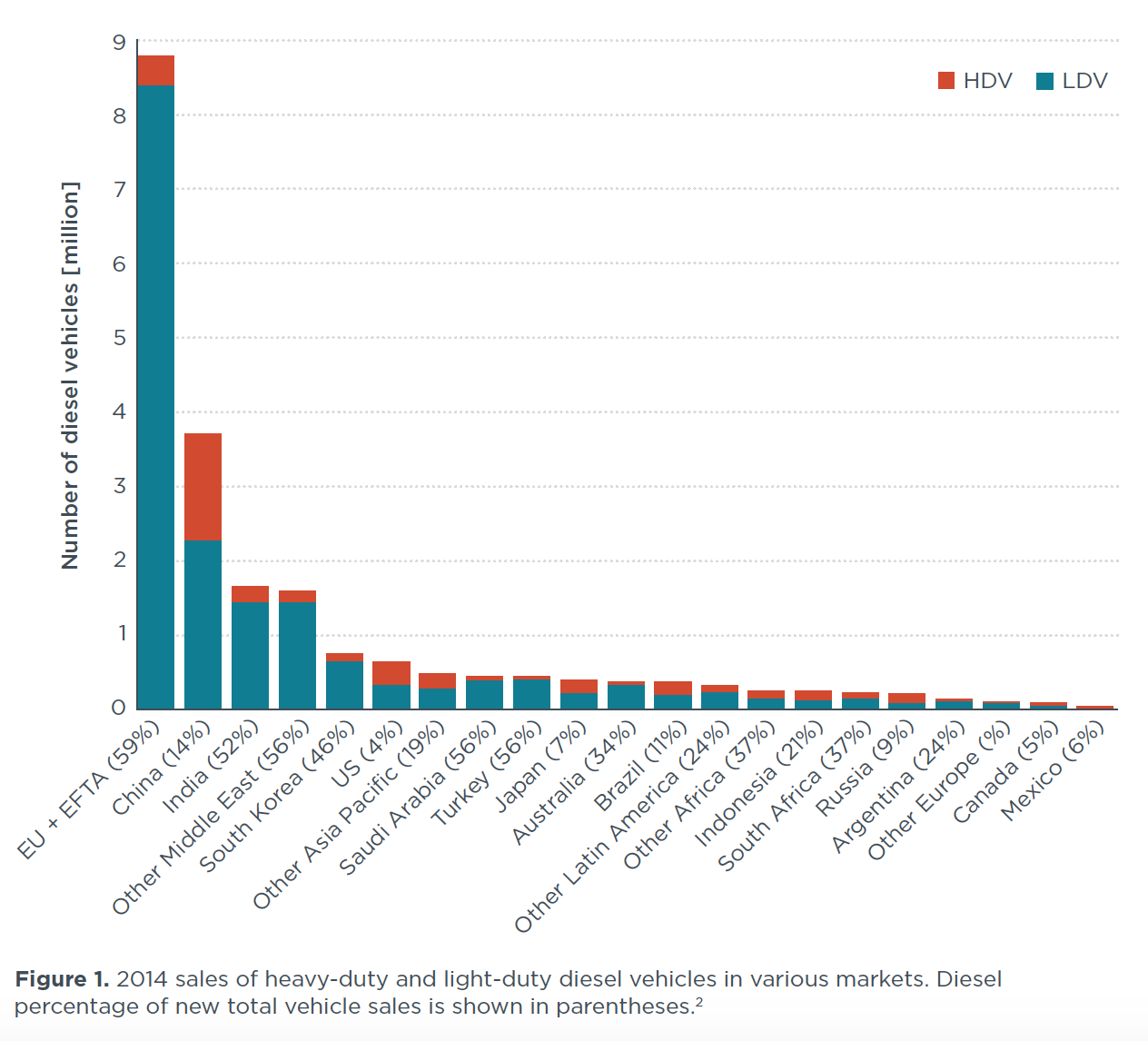Briefing
NOx emissions from heavy-duty and light-duty diesel vehicles in the EU: Comparison of real-world performance and current type-approval requirements
More diesel vehicles are sold in Europe than in China, India, and all of the Americas combined—over 8.8 million in 2014 alone, more than double the sales in the next largest diesel market, China (Figure 1). The majority of the diesels sold in Europe, as in the global market, are passenger cars; approximately five diesel passenger cars were sold worldwide for every heavy-duty vehicle.
The months since the Volkswagen emissions cheating scandal broke in September 2015 have seen a heated public debate concerning exhaust emissions of nitrogen oxides (NOx) from diesel cars in Europe. The crux of that debate is that under normal operation many of these vehicles far exceed the limits imposed by regulation and certified by official type approval tests, which all vehicle models must pass as a condition of being offered for sale in the European Union. There has been little comparable discussion of NOx emissions from diesel trucks. The most likely explanation for this different treatment is that data from in-use testing indicates that, in contrast to Euro 6 cars, Euro VI trucks do not systematically emit significantly more NOx in real-world, everyday operation than they are certified to. And there is a likely explanation for that as well: emissions from diesel cars and trucks are regulated differently under the Euro standards.
This briefing paper identifies key differences in the regulations governing certification of NOx emissions from diesel cars (Euro 6) and trucks (Euro VI) that help explain differences in their real-world emissions performance. Ultimately, an examination of the heavy-duty vehicle regulation reveals insights that could be used to improve the light-duty vehicle regulation.

